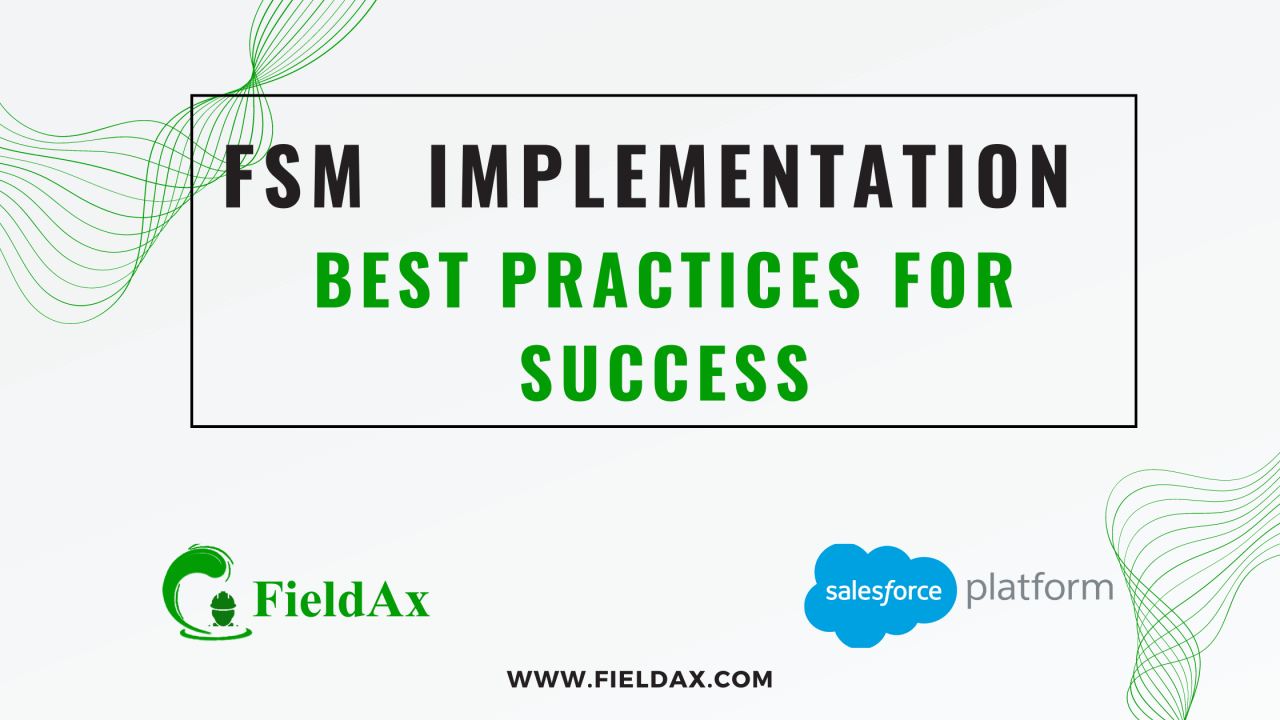Did you know that the field service management software market is projected to grow by USD 3.43 billion by 2024, with a CAGR of 17%?
Field service management is growing fast. Choosing the right software can make operations better. It can also make customers happier and lead to more success. But, doing it right is key.
In this article, I’ll give you tips for getting field service software right. With these steps, your company can work better, be more efficient, and make customers happy.

Key Takeaways:
- Having clarity of purpose is crucial for effective field service software implementation.
- Focusing on improving overall efficiency through automation and user-friendly interfaces enhances operational performance.
- Ensuring flexibility allows organizations to adapt to changing business needs and customer requests efficiently.
- Training the workforce on software usage and providing ongoing support is essential for successful adoption.
- Regularly reviewing the software and incorporating user feedback helps identify areas for improvement and ensure continued success.
Have Clarity of Purpose
When you start using field service software, knowing your goals is key. It helps turn your big business plans into clear, definite aims. By matching your goals with the software, you make sure it runs smoothly, boosting your work.

Next, it’s important everyone knows who uses the software and how. This way, people take their roles seriously, making sure the software is used right. Also, having special apps for customers and workers makes things run even better, using the best field service methods.
Focus on Improving Overall Efficiency
To make field service operations top-notch, focus on efficiency. You need software that’s easy to use. This software should have a clean design. A simple design helps service agents use it without trouble.
Automation is key to reduce manual work. It makes processes quicker and smoother. At the same time, a good software doesn’t compromise on security. It must keep data safe and support continuous service.
The service software should work well with what you already have. This way, your operations become even more efficient. By enhancing how you manage services, you delight your customers more.
Ensure Flexibility
Flexibility is crucial for field service software to meet changing business needs. A good field service strategy should be able to adjust quickly. This lets users change things and create custom reports. It helps them handle customer requests well.
Checklists and templates should be easy for site supervisors and agents to adapt. This means they can make their work better fit the job. Field teams can tweak their methods as necessary. This improves how the company’s services are delivered and cuts down on errors.
Good field service software also needs to blend with other systems easily. This smooths out how data is shared and cuts out manual work. Integration with CRM systems and other important tools is key. It helps field teams understand customers better. They can then offer service that’s more personal and effective.
Field service software must also grow as the company does. It should adapt to new demands. This can save a lot of time and money on future changes or upgrades.
Software that can flex makes things run smoother and keeps customers happy. Being able to adjust to new needs keeps a business competitive. It ensures that the company’s field service management is a success.
Train the Workforce
Training and support are key for great field service work. It’s vital to teach field workers how to use the service software well. This helps them use all the software’s good parts so they can work better and make customers happy.
Having someone focused on helping with the software boosts its use. Field workers get help when they need it. This means they can deal with software problems fast and keep working smoothly.
Review the Software
Technology always changes, and software for managing field services improves too. It’s vital to check the software often for better field service operations.
Setting up key performance indicators (KPIs) is a key part of this check-up. KPIs measure how well the software is working. They show what’s going well and what needs to get better. This way, companies can see if their field service management is successful.
Talking to people who use the software daily is also crucial. They can tell you what works and what doesn’t. Their feedback points out problems they face. This helps make updates that boost the software’s use.
The importance of managing resistance to change
Managing resistance to new software is a big deal. People might push back, especially if the change is huge. But, with clear talk, training, and dealing with worries, you can make the switch easier.
Don’t skip looking into new software features. You might find great tools. Updated software keeps your business efficient and competitive.
Making software checks a part of managing field services is smart. It helps keep your software top-notch. And, it makes your customers happy.

Review Existing Landscape
Before adding new software for field service management, it’s vital to look at what’s already there. We need to see what’s missing to improve how field service works.
Figuring out what’s needed to make field service better is very important. This helps us pick software that meets our needs and goals.
It’s also key to know what the current system does well and where it falls short. This way, we can figure out how the new software can do better. Looking closely at the current situation helps us prepare for challenges too.
By going over everything, we get to know exactly what our field service needs. This helps in choosing and using the new software properly. We make sure it focuses on what really matters and solves important problems.
Looking at what we have is fundamental for great field service. It makes sure we start on solid ground and the new software fits well with our ways and goals.
Identifying Gaps and Needs
When checking the current scene, we must spot the weaknesses and needs. This means looking at what’s not working, what’s inefficient, or what’s lacking.
Things to consider include planning, keeping track of supplies, talking to customers, and making reports. This review helps us figure out what features we really need in new software.
For instance, if we can’t see what’s happening in the field right now, finding software with good tracking is important. Likewise, struggling with sharing data with other tools shows we need software that works well with others.
Finding these weaknesses and needs lets us pick software that exactly fits our needs. This direct approach makes our setup smoother and more targeted for our challenges and goals.
Get Input from Field Team
It’s vital to get the field team involved in making decisions. This helps optimize field service and boosts success. They can point out real problems the new software can solve.
Working with the field team shows you trust their skills. This commitment makes them more likely to support the new software. It also makes them feel they own the process, making the change smoother.
We can gather their input by creating open communication channels. This could be through team meetings or feedback sessions. Listening to their ideas and concerns is key. It ensures the new software meets their specific needs, improving operations.
Conclusion
Adopting top practices for great field service is key. It helps improve how field service works and keeps customers happy. Knowing your goals lets you match your tech tools with what you need to do.
Wasting time reduces with better ways to work and getting more done. Tools that automate jobs and are easy to use can really help. This makes everything run more smoothly.
Being able to change quickly and meet customer wishes is also important. Features that can be adjusted and templates that change help teams work better. It fits their exact needs.
Teaching how to use the software boosts its success. Giving lots of help makes sure everyone can use the tools well. This helps teams do their job better and faster.
Checking how well the software works is crucial. Feedback from users is key. It shows what needs to be fixed so that things keep improving.
Following these tips can lead to success in field services. It lets businesses use their tools and people well. They become great at what they do and make customers very happy.
See how FieldAx can transform your Field Operations.
Try it today! Book Demo
You are one click away from your customized FieldAx Demo!
FAQ
What are the best practices for successful field service software implementation?
For top-notch field service software implementation, start with clear goals. Make efficiency a focus. Also, ensure it’s flexible, train your team, and keep checking how it’s working.
How can I have clarity of purpose in field service software implementation?
To be clear on your software’s purpose, set clear goals. Make your business strategy’s goals specific and measurable. Also, assign clear roles for using the software.
How can I improve overall efficiency in field service management?
Boost efficiency by making software with a simple design and easy to use. Add automation to cut down manual work. It must also be strong, safe, and fast. Compatibility with what you already use is key too.
How can I ensure flexibility in field service software?
Software flexibility is vital. It needs to let users change things and create custom reports. Also, make sure site supervisors and agents can adjust checklists and templates to fit new needs.
How can I train the workforce for successful field service software adoption?
Training your team is key. Make sure field agents know how to use the software and why it’s good for them. Have someone they can turn to for help, too.
Why is it important to regularly review the field service software?
Check in on your software often. It’s how you see if it’s working well. Getting feedback and dealing with resistance to change is crucial, too.
How should I review the existing landscape before implementing field service software?
First, understand what you need by checking your current setup. Know what’s missing and what you need. This makes the software fit your service even better.
How can I get input from the field team during software implementation?
Ask your team for advice. Their real-life insights are invaluable. This step boosts their confidence and makes switching to new software smoother.
Author Bio
Co-Founder & CMO at Merfantz Technologies Pvt Ltd | Marketing Manager for FieldAx Field Service Software | Salesforce All-Star Ranger and Community Contributor | Salesforce Content Creation for Knowledge Sharing






